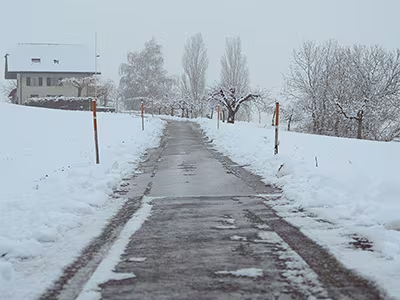Official Forecast: How Many Cold Fronts Will Impact the 2025-2026 Season?
Worldwide Winter 2025-2026 Outlook: Climatic Trends and Predictions
Reading time: 1 minute, Discovery Chepe Id-820-ECO
Published on 09-28-2025

A colder-than-usual season. Photo: Matthias Fuhrimann
The winter of 2025-2026 is shaping up to be one of the most dynamic and extreme in recent years. According to forecasts from agencies such as the NOAA and the World Meteorological Organization, the planet will face a season marked by a significant increase in the number of cold fronts and more intense and unpredictable weather patterns.
Cold fronts in Mexico and Latin America
In Mexico, the National Meteorological Service forecasts between 53 and 58 cold fronts for the 2025-2026 winter, slightly above the historical average of around 50. These systems could begin forming as early as late September and continue until May.
Experts attribute this increase to oceanic and atmospheric phenomena like La Niña, which usually brings colder winters in the Northern Hemisphere. Significant temperature drops are expected across northern, central, and highland regions, with cold waves potentially reaching below -5 °C in some areas.

Cold Fronts and Winter 25-26: Analysis of the Meteorological Landscape
Photo: Robert Perkins
United States and Canada: severe cold and strong storms
North America is expecting an active winter. The U.S. could see over 60 frontal systems, many tied to severe winter storms, especially in the Northeast and Midwest. Canada, meanwhile, is bracing for one of its coldest winters in the past decade, with temperatures up to 3 °C below average in central and western provinces.
Europe: thermal contrasts and early snow
Europe is also set for a challenging winter. Experts at the UK Met Office predict an increase in cold spells and early snowfalls, especially in northern and eastern Europe. Countries like Germany, Poland, and Sweden could see over 50 cold fronts, while southern Europe may experience a milder winter with occasional cold snaps.
Asia: from Siberia to the winter monsoon
Asia will experience a dual scenario. Siberia and northern China will face extremely low temperatures, with powerful cold fronts possibly reaching the south. Meanwhile, southern and southeastern Asia could have wetter winters as cold air interacts with the monsoon.
South America and Oceania: changing patterns
In the Southern Hemisphere, the impact will be different. Argentina and Chile are expected to see a longer winter with late cold events due to persistent cold masses in the South Atlantic. Australia and New Zealand may also face intense off-season cold waves linked to shifts in polar currents.
What experts recommend
1- Stay informed through official weather sources.
2- Prepare homes for extreme cold, especially in regions not used to it.
3- Inspect and service heating systems in advance.
4- Pay special attention to vulnerable groups like the elderly and children during cold spells.
The 2025-2026 winter will be a reminder that the global climate continues to change, and adapting to these new dynamics will be essential in the years to come.
See Also
Discovery Chepe
Most read...















